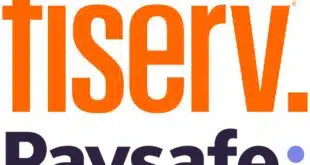Some 43% of businesses report they were exposed to card fraud in 2013, a whopping rise of 14 percentage points from 2012, according to the latest annual fraud survey from the Association of Financial Professionals. Nonetheless, survey respondents are remarkably optimistic about the Europay-MasterCard-Visa (EMV) chip card standard, with 92% predicting the standard will dramatically reduce or somewhat reduce card fraud.
Despite the spike in attempted or actual card fraud last year, checks remain fraudsters’ favorite vehicle, though the number of businesses subjected to check fraud declined, from 87% in 2012 to 82% last year, according to the survey.
Researchers at the Bethesda, Md.-based AFP, which has surveyed its membership about fraud every year since 2005, say the card-fraud result for 2013 was especially surprising and may indicate criminals are acting quickly to take advantage of the U.S.’s mag-stripe-based card system before the arrival of EMV chips, which are widely seen as more secure. “We are seeing quite a dramatic increase here,” says Magnus Carlsson, manager for treasury and payments at the association. “Previous to this, [card fraud] has been fairly flat, so this [increase] is trend-breaking.”
Fraudsters are moving away from checks to exploit current vulnerabilities in cards, Carlsson says. “We kind of lack the security measures that are common overseas [like EMV],” he tells Digital Transactions News.
The nation’s card networks have set an October 2015 deadline for card issuers and merchants in the U.S. to convert to EMV. Those that aren’t capable of handling EMV by that date will be responsible for counterfeit card fraud.
The AFP survey shows businesses are sanguine about the arrival of EMV, expecting investments they make in new equipment to pay off in reduced fraud losses. Some 22% of members that accept credit and debit cards expect their investments to have a “significant” impact on fraud, while half expect “some” impact. Asked about the effectiveness of EMV, only 8% said it would not reduce their levels of fraud. Carlsson expects many among the 50% in the “some impact” camp will move to the “significant” column next year as the liability shift draws nearer.
As for other payment methods, the automated clearing house experienced a mixed bag, with fewer companies reporting fraud exposure on ACH debits (22% vs. 27% in 2012) but slightly more saying they saw attempted or actual fraud on ACH credits (9% vs. 8%). Wire transfers also showed an increase, with 14% reporting fraud exposure vs. 11% in 2012. For all payment methods, members reporting attempted and actual fraud fell to 60%, the lowest number seen since the survey’s first year, when 55% reported fraud exposure, and down from the 73% peak seen in 2009.
Interestingly, businesses sustain actual dollar losses in relatively few cases of fraud. Indeed, for 2013, some 70% of those reporting fraud exposure said they had suffered no losses at all. At the same time, the costs to defend against fraud, and “clean up” in cases of actual fraud, are relatively small in most cases. Forty-two percent reported no costs at all, while another 47% said their costs were less than $25,000.
For its “2014 Payments Fraud and Control Survey,” the AFP received 449 responses, with 318 coming from member companies and the balance from corporate finance executives with non-member companies. Half of responding organizations receive payments mostly from consumers or from a mix of consumers and businesses.





